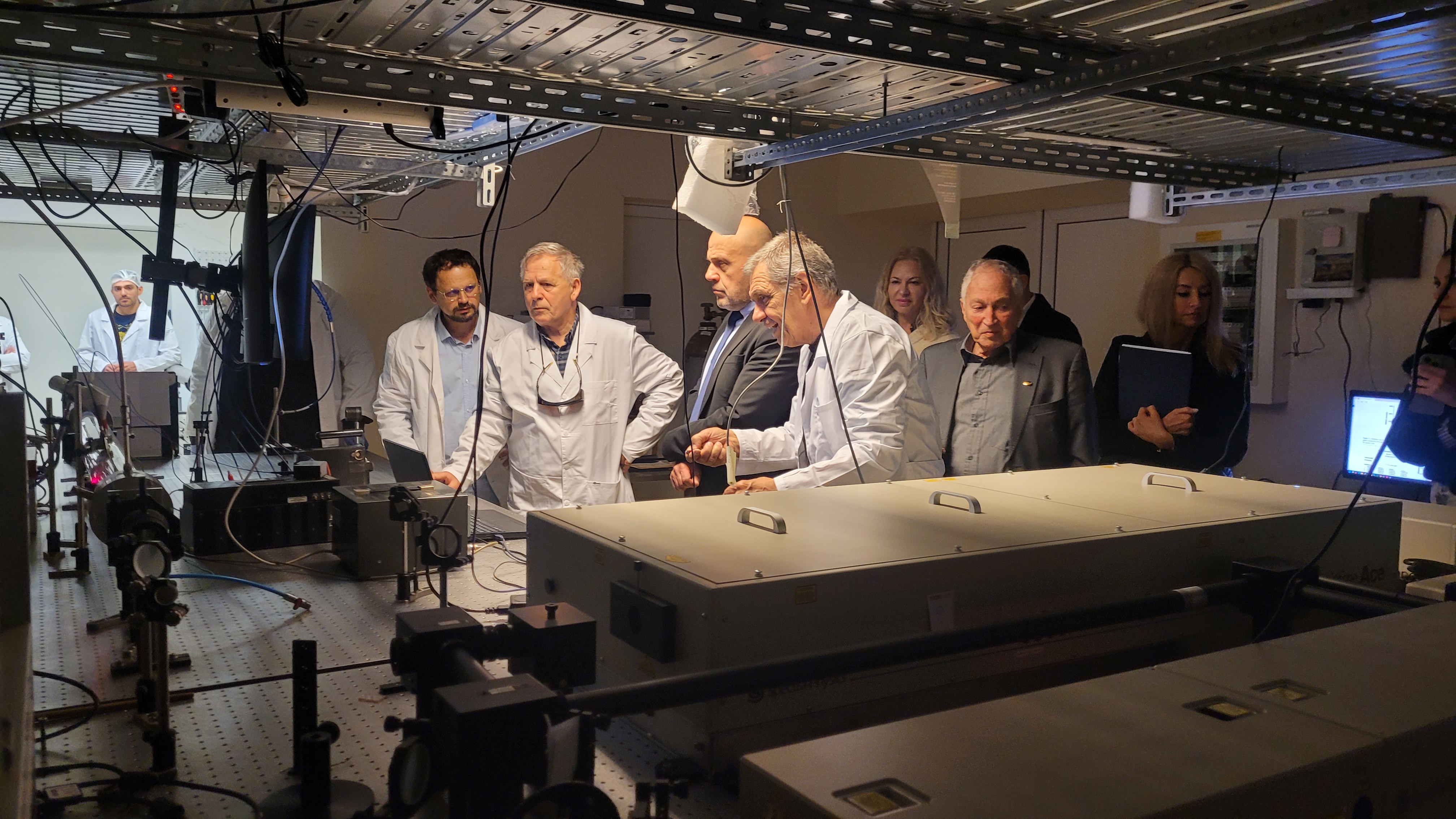Study reveals in detail the quiet Sun at low frequencies
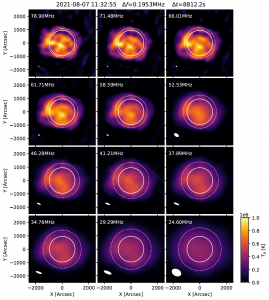
Calibrated interferometric images of the quiet solar corona on 07.08.2021 in low frequencies (24.60-78.90 MHz) observed by LOFAR.
The Sun is an active star that has significant radio emission over a wide frequency range from kHz to THz, and the solar atmosphere has a complex distribution of magnetic field, plasma density and temperature. These different properties of the solar atmosphere lead to different radio emission characteristics at different frequencies. Interferometric imaging observations of solar low-frequency emission can help diagnose the properties of the plasma at high altitudes in the solar atmosphere.
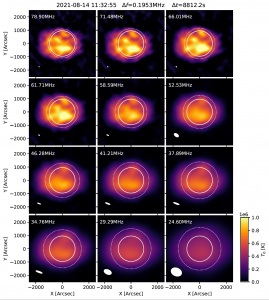
Calibrated interferometric images of the quiet solar corona on 14.08.2021 at low frequencies (24.60-78.90 MHz) as observed by LOFAR.
In their recent paper ” Imaging of the Quiet Sun in the Frequency Range of 20–80 MHz”, published in the prestigious journal “The Astrophysical Journal” (https://doi.org/10.3847/1538-4357/ac6b37), an international team of 10 scientists summarizes the results of observations of the quiet Sun made in meter radio waves, achieving unprecedented spatial resolution for solar observations in these frequencies. For the first time, the authors achieved precise measurements of our star’s brightness temperature and size in the 20-80 MHz range, and observed spatially resolved structures in the solar corona. The results compensate for the lack of low-frequency brightness temperature measurements in previous observations.
The team of scientists who carried out the study includes Bulgarian researchers Assoc. Prof. Kamen Kozarev, PhD, and postdoctoral researcher Zhang Peijin, PhD, from the Institute of Astronomy with NAO at BAS, as well as their colleagues from the Netherlands, Ireland, China, Poland, Belgium and Germany. The development was supported by the EU Horizon 2020 Framework Programme for Research and Innovation, the STELLAR project, and the National Science Programme “Research and People for the Development of European Science” (VICHREN) of the Bulgarian National Science Fund.
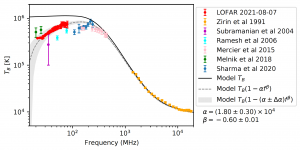
The brightness temperature spectrum observed by LOFAR (red), the brightness temperature of the model (solid black) and previous observations.
Radio emission from the quiet Sun is thought to be due to thermal bremsstrahlung by electrons in the hot solar atmosphere. The properties of the quiet Sun in the microwave spectrum have been meticulously studied and can be well described by the emission spectrum of bremsstrahlung. In the meter and decameter wavelength range, the properties of the quiet Sun are almost unexplored due to instrumental limitations. In the new study, the researchers used the LOw Frequency ARray (LOFAR) telescope to perform high-quality interferometric imaging spectroscopy – imaging observations of solar radio emission from the quiescent corona at frequencies below 90 MHz. The temperature spectrum of the brightness and size of the Sun in the frequency range 20-80 MHz is presented. The study reports dark coronal regions with low brightness temperature at all observed frequencies. The brightness temperature spectrum of the quiet Sun is examined and compared with the emission of bremsstrahlung of a coronal model and with previous observations of the quiet Sun.
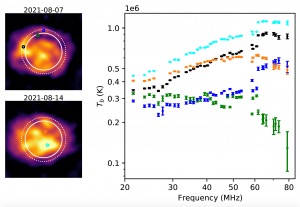
The brightness temperature spectra of a few selected coronal positions. The spectrum of a very radio-dark region in the corona observed on 07.08.2021 is shown in green (upper solar radio image).
With the introduction of the LOFAR 2.0 upgrade programme, this telescope will gain even higher spatial, temporal and frequency resolution in the near future, enabling scientists to study the Sun’s atmosphere in greater detail. Bulgaria is actively involved in the upgrade and development of the LOFAR radio telescope through the construction of its own LOFAR-BG observation station, an object of the National Roadmap for Research Infrastructure led by the Ministry of Education and Science. The Institute of Astronomy leads the LOFAR-BG consortium which works to develop radio astronomy in Bulgaria.





